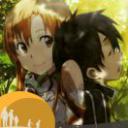Cattle calls in sonepur
时间:2022-10-01 12:34:20
Traffic begins to build up as you approach sonepur from Patna. Buses filled with pilgrims, some perched on the roofs with the luggage in bundles, vie with the Boleros and Scorpios of landowners and rich farmers, jostling the simpler, rustic bullock carts, all trying to avoid the stream of those making their way on foot to the river and the camping grounds there.
It is time for the annual Sonepur cattle Fair, arguably the largest of its kind in Asia. Here for the next month or so, animals will be bought and sold in an unrivalled display of colour and festivity. Here too, on Kartik Purnima, the day of the full moon in November, lakhs of people will take a ritual dip at the auspicious confluence of the rivers Ganga and Gandak and visit the Harihar Nath temple close by.
Like many of the country’s fairs and melas where a religious place, event or season is the reason for the gathering, Sonepur has the legend of Gajendra Moksha and the ancient Harihar Nath temple as its focus. As it is told, a Pandava King, Indrayamuna, and a Gandharva chief named Huhu were cursed by the sages Dewala and Agastya Muni who turned them into an elephant and a crocodile respectively. One day, the elephant Indrayamuna stepped into the water where the crocodile Huhu grabbed him by the leg. The fierce struggle lasted for years, with more participants joining in on both sides. Finally, the tiring elephant called on Vishnu for help and hearing his prayers, Vishnu cut the crocodile down with his chakra. This action returned both Huhu and Indrayamuna to their human form, after which they were taken into heaven.
The original Harihar Nath temple is said to have been built by Ram on his way to King Janak’s court to seek the hand of Sita. In the 16th century, it was repaired by Raja Man Singh of Amber, one of the luminaries at Emperor Akbar’s Court. The present temple was built by Raja Ram Narain in the 18th century.
The origin of the Fair has been lost in antiquity. Legend has it that the powerful Emperor Chandragupta aurya bought horses and elephants here, across the Ganga. The original venue of the Fair was Hajipur, five kilometres away but was shifted to its present site in the 17th century by the Mughal emperor Aurangzeb.
Over the years this developed into a forum for the cattle trade, attracting buyers, it is said, from as far away as Central Asia. In addition to cattle, today you can find a variety of animals for sale: horses and ponies, water buffalo, camels, dogs of various breeds, sheep and goats, cats and many kinds of birds and fishes. It is rumoured that a number of protected species are also available but deals are very hush-hush and take place with the utmost secrecy.
For those who are not here to trade the biggest draw are the elephants. Though the number has dwindled in recent years, they are still a great crowd- puller. Sometimes you see half a dozen marching majestically in single file, trunk to tail; or suddenly, through a gap in the motley throng, you get a glimpse of one towering over us mortals as it plods down the road.
The year we went, we came across one being groomed for display. It was a fascinating sight. While tourists with cameras vied for vantage positions, it lay somnolent and docile in the river’s shallows, seemingly unperturbed as the mahout scrubbed it down with a hard brush as part of the daily bath ritual. Then it was decked out in finery to make it look more attractive and hopefully bring in a better price from buyers, most of whom are either loggers or government forest departments.
Meanwhile, down the road there’s a lot of horse trading—of the original kind— going on.
In an improvised ring, the horses are being put through their paces, sellers showing off the stellar qualities of their mounts. Onlookers shout encouragement while prospective buyers stand around stony-faced; any positive reaction probably would raise asking prices.
As the sun goes down and the lights come up on the funfest, it seems that everyone has congregated the fairground. Grizzled farmers, traditionally turbaned and dhoti-clad, sadhus, businessmen and rural women decked out in their colourful best, young people out for an evening’s entertainment. The shops seemed to be selling just about everything. We wandered around the stalls selling bangles, beads and shawls, examined the cooking pots and agricultural implements, checked out branded cosmetics, ayurvedic medicines and copper bracelets. And settled for a plate of potato and vegetable curry with chapatis fresh off the tawa.
Afterwards, you will stand at the edge of a crowd and watch a dance performance by a local group, one of the many evening entertainments at the fair. One of you will probably remark on the pervasive influence of Bollywood throughout the country. “Look at the audience,” one will say, “they are actually enjoying this stuff!” “But aren’t we too?” perhaps another will chip in.
And, in fact, it will be true. You will enjoy Sonepur Mela the way that you can only just about imagine.
